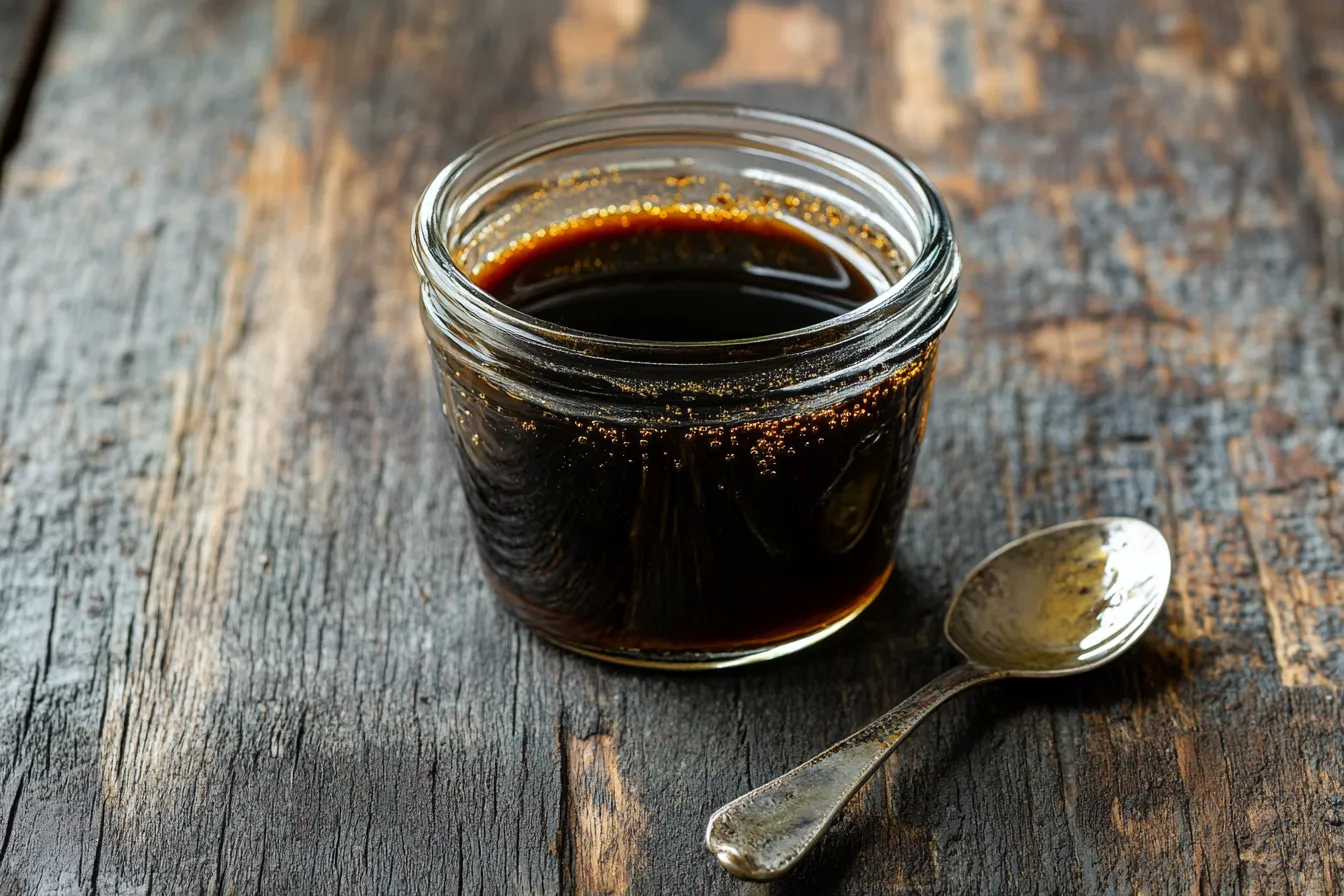Introduction
There’s something timeless about a well-made balsamic vinaigrette. This bold, tangy, and slightly sweet dressing has become a household staple for good reason. It turns even the simplest salads into a restaurant-worthy dish, and it’s equally delicious drizzled over roasted vegetables or used as a marinade for grilled meats.
What makes balsamic vinaigrette truly special is its elegant simplicity. At its core, it relies on the magic of high-quality balsamic vinegar balanced with extra virgin olive oil, a dash of mustard for creaminess, and just enough sweetness to tame the acidity. Unlike store-bought salad dressings, which often contain preservatives, stabilizers, and unhealthy oils, homemade balsamic vinaigrette offers fresh, vibrant flavor with wholesome ingredients you can trust.
Beyond its taste, balsamic vinaigrette carries significant health benefits. The olive oil base is rich in heart-healthy monounsaturated fats and antioxidants that support overall wellness. Meanwhile, balsamic vinegar itself offers protective polyphenols that help fight inflammation and may aid in blood sugar regulation. It’s no wonder this simple blend of ingredients has stood the test of time, becoming a beloved staple across cultures and cuisines.
In this comprehensive guide, we’ll dive deep into what makes a truly exceptional balsamic vinaigrette, explore its origins and variations, and show you exactly how to make it like a pro. Whether you’re a health-conscious home cook or someone who simply craves incredible flavor, this article will equip you with everything you need to create a balsamic vinaigrette that’s both delicious and nourishing..Tiger Sauce Recipe
The Origins of Balsamic Vinaigrette
Balsamic vinaigrette, as we know it today, has roots that trace back to the traditions of Italian cuisine, particularly in the Emilia-Romagna region, where balsamic vinegar has been crafted for centuries. Authentic balsamic vinegar is made from the pressed juice of Trebbiano or Lambrusco grapes, which is then slowly aged in wooden barrels for years — sometimes decades — to develop its deep, complex flavor. This traditional balsamic vinegar, known as Aceto Balsamico Tradizionale, is treasured for its thick, syrupy consistency and balanced sweet-tart taste.
The idea of combining balsamic vinegar with oil to make a vinaigrette emerged from classic French culinary practices, where vinaigrettes were already a popular way to dress greens and fresh vegetables. Over time, home cooks and chefs across Italy and beyond began blending balsamic vinegar with olive oil, Dijon mustard, and sometimes a touch of honey or garlic to create what we now recognize as balsamic vinaigrette.
What’s fascinating is how balsamic vinaigrette has evolved across cultures. In Italy, it might be drizzled simply over fresh arugula or ripe tomatoes. In the United States, it has become a go-to dressing for everything from leafy salads to hearty grain bowls. Its global popularity is a testament to its versatility, proving that a few high-quality ingredients can truly transform a meal.
Today, balsamic vinaigrette is available ready-made in nearly every grocery store, but nothing compares to making it yourself at home. With just a few pantry staples and a couple of minutes, you can create a dressing that’s fresher, healthier, and far more delicious than anything bottled.
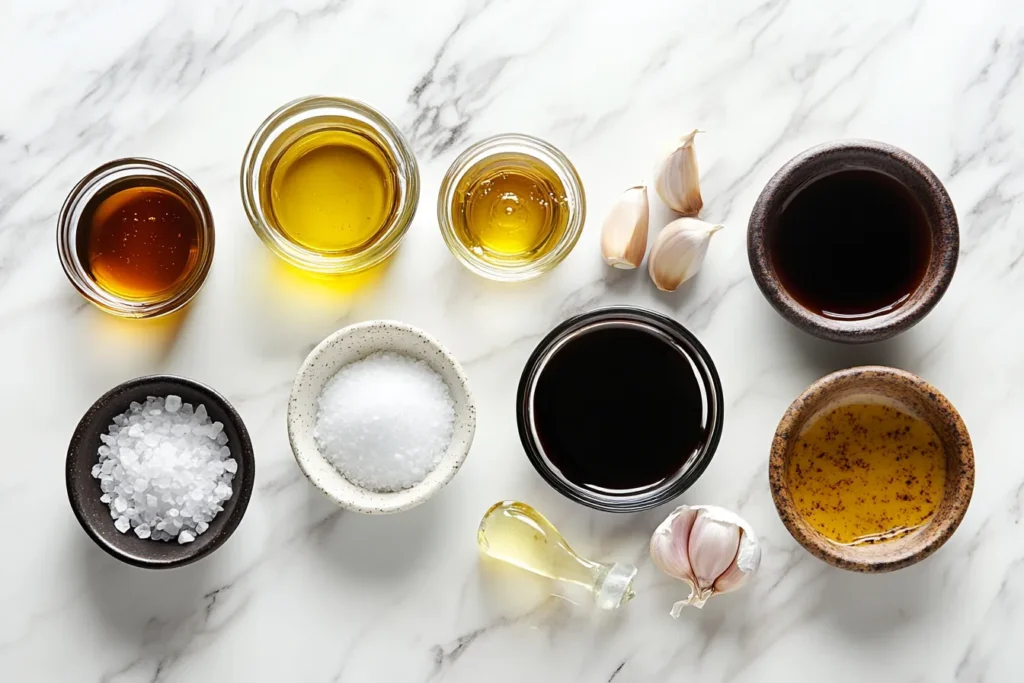
Health Benefits of Balsamic Vinaigrette
Balsamic vinaigrette isn’t just about incredible flavor — it’s also packed with nutritional advantages that make it a smart choice for a healthy diet. By combining high-quality balsamic vinegar with extra virgin olive oil, you get a dressing rich in antioxidants, heart-healthy fats, and micronutrients that support your overall wellness. Let’s explore how each ingredient contributes to these benefits.
Heart Health
One of the biggest advantages of balsamic vinaigrette comes from its olive oil base. According to the American Heart Association, extra virgin olive oil is a major source of monounsaturated fatty acids, which can help reduce levels of bad cholesterol (LDL) while maintaining good cholesterol (HDL). This supports cardiovascular health and lowers the risk of heart disease over time. Balsamic vinegar itself also contains polyphenols that may help reduce blood pressure and improve circulation.
Antioxidant Power
Balsamic vinegar is loaded with polyphenols, which act as antioxidants in the body. Antioxidants are crucial for fighting free radicals, the unstable molecules that can damage cells and contribute to chronic illnesses, including certain cancers and heart disease. These same antioxidants may help reduce inflammation, keeping your body functioning at its best. By including balsamic vinaigrette in your regular meals, you can enjoy these protective benefits with every drizzle.
Nutritional Breakdown
Homemade balsamic vinaigrette is a low-calorie, nutrient-dense dressing. Typically, it contains about 80–100 calories per two-tablespoon serving, most of which come from heart-healthy olive oil. Balsamic vinegar itself is virtually fat-free and adds minimal sugar, especially when you skip artificial sweeteners or store-bought additives. Homemade options let you control exactly what goes in, so you can keep sodium, sugar, and preservatives at healthy levels..Yakiniku Sauce
Key Ingredients of Balsamic Vinaigrette
Let’s break down the essential elements that make balsamic vinaigrette so delicious and versatile. Each ingredient plays a key role, and understanding their characteristics will help you build the perfect dressing every single time.
High-Quality Balsamic Vinegar
The star of the show, balsamic vinegar brings a deep, sweet-acidic complexity to vinaigrette. Look for an authentic aged balsamic labeled “Aceto Balsamico di Modena” with a protected designation of origin (PDO) if possible. These vinegars tend to have a thicker, richer profile compared to cheaper, mass-produced versions that are often overly acidic and watery.
Extra Virgin Olive Oil
Olive oil forms the rich, smooth base of the vinaigrette. High-quality extra virgin olive oil is best because it offers a fruity, peppery flavor along with monounsaturated fats. According to the Mayo Clinic, these healthy fats may protect against inflammation and help maintain heart health.
Dijon Mustard
Dijon mustard isn’t just for sandwiches — it’s a powerful emulsifier that helps bind the oil and vinegar together so the dressing doesn’t separate as easily. It also provides a subtle tangy bite that balances the sweetness of balsamic.
Sweeteners
A little sweetness rounds out the tartness of balsamic vinegar. Honey and pure maple syrup are the most popular choices because they blend smoothly and add natural sweetness without overpowering the other flavors.
Garlic and Herbs
For those who love a flavor boost, minced garlic, dried oregano, or fresh basil can bring additional layers of taste to your vinaigrette. These ingredients not only enhance flavor but may also offer extra antioxidants and antimicrobial benefits, creating a truly powerhouse dressing.
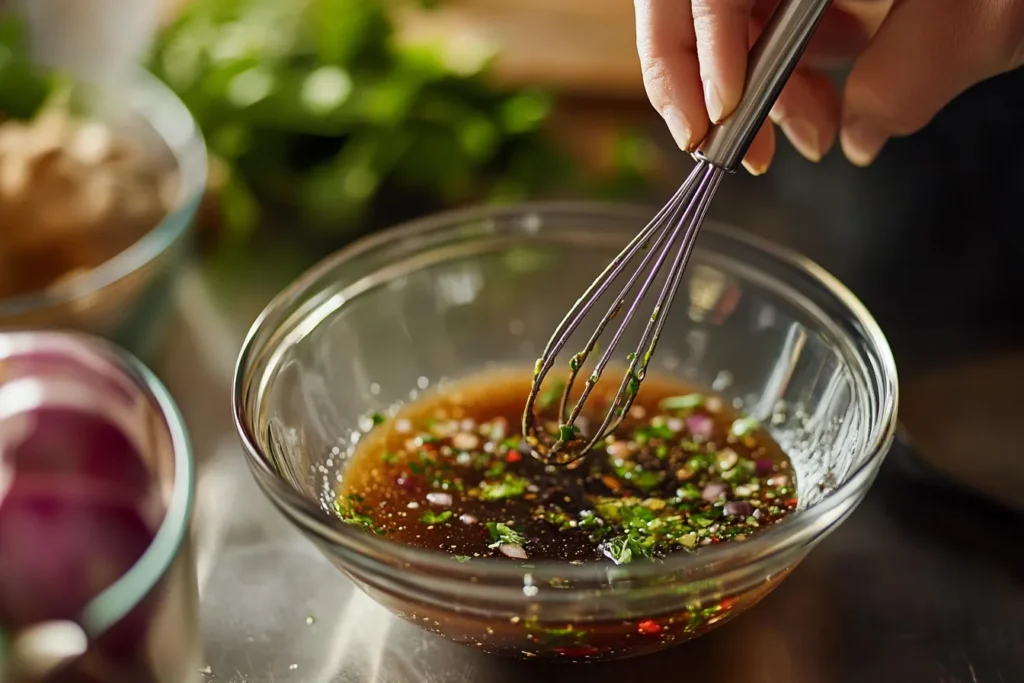
How to Make the Perfect Balsamic Vinaigrette
Making balsamic vinaigrette at home is incredibly simple and requires just a handful of pantry staples. The beauty of this dressing is its flexibility — you can adjust flavors, add creative twists, or even experiment with different emulsification methods. Let’s look at three common approaches for making the best balsamic vinaigrette from scratch.
Classic Whisk Method
The traditional way to make balsamic vinaigrette is by whisking. Simply add balsamic vinegar, Dijon mustard, honey, garlic, salt, and pepper to a small bowl. Then, while whisking constantly, slowly drizzle in extra virgin olive oil. This helps emulsify the dressing so it becomes creamy and smooth instead of separating. The constant whisking creates a stable emulsion, giving you a perfectly balanced vinaigrette with a silky texture.
Mason Jar Shake Method
If you’d rather skip the whisk, a mason jar does the trick beautifully. Add all the ingredients to the jar, screw the lid on tightly, and shake vigorously for about 30 seconds. This method is fast, mess-free, and makes storage easier — you can keep the vinaigrette right in the same jar for up to a week in the fridge. Just remember to shake it again before serving, since homemade dressings can naturally separate over time.
Blender Method
For an ultra-smooth, slightly thicker vinaigrette, try using a small blender. Blend all the ingredients together on low speed, then slowly stream in the olive oil while the motor runs. The high-speed blending helps break down garlic or herbs into a perfectly even consistency and gives the dressing a more luxurious, restaurant-quality mouthfeel.
Tips for Perfect Flavor and Emulsion
Homemade balsamic vinaigrette is easy, but a few key tips will take it from good to great.
Balance Acidity and Sweetness
The hallmark of an excellent vinaigrette is a well-balanced sweet-tart profile. If your dressing tastes too sharp, add a bit more honey or maple syrup. On the flip side, if it’s too sweet, increase the balsamic or add a splash of lemon juice for more acidity. Taste as you go, and adjust until you find the balance that suits your palate best.
Emulsifiers Matter
Dijon mustard is the best natural emulsifier for balsamic vinaigrette. It helps keep the oil and vinegar blended together, preventing the dressing from splitting. If you want a more stable emulsion, you can also add a teaspoon of mayonnaise, though it will slightly change the flavor and creaminess.
Storing Your Vinaigrette
Homemade balsamic vinaigrette can last up to a week in the refrigerator when stored in a sealed jar or bottle. If you see the oil and vinegar separate, don’t worry — just give it a good shake or whisk before using. For best results, store it away from direct light or heat to preserve the flavors of the olive oil and vinegar.
Variations to Try
One of the best things about balsamic vinaigrette is how easily it can be adapted to suit your taste or to match different meals. Here are a few creative twists to explore.
Creamy Balsamic Vinaigrette
Blend in a tablespoon of Greek yogurt or mayonnaise to create a creamy version of balsamic vinaigrette. This results in a thicker, richer dressing perfect for hearty salads or even as a dip for veggies.
Spicy Balsamic Vinaigrette
If you enjoy a bit of heat, add a pinch of red pepper flakes or a splash of hot sauce. The gentle spice pairs beautifully with the sweetness of balsamic vinegar, creating a complex, bold flavor.
Lemon Balsamic Vinaigrette
Add freshly squeezed lemon juice for a brighter, more citrus-forward profile. This version pairs wonderfully with seafood or delicate greens like arugula.
Honey Balsamic Vinaigrette
Use extra honey or maple syrup for a sweeter style of vinaigrette that works perfectly on roasted vegetables or grain-based salads like farro or quinoa bowls.
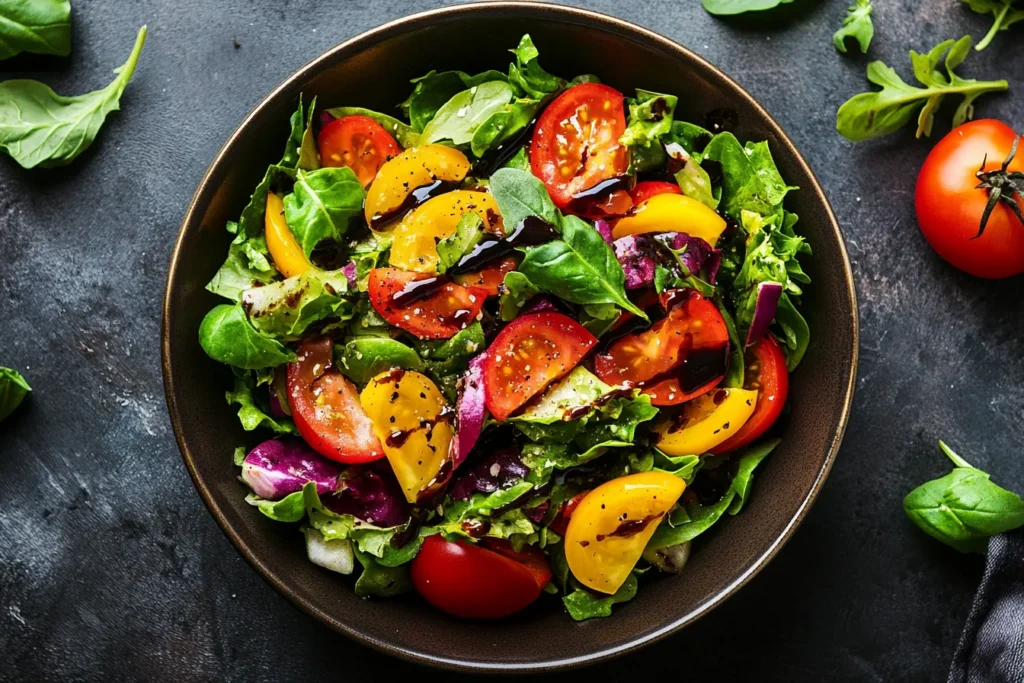
Delicious Ways to Use Balsamic Vinaigrette
One of the greatest features of balsamic vinaigrette is its sheer versatility. While it’s most famous as a salad dressing, you can use it in countless creative ways to boost flavor in everyday cooking. Here are some inspiring ideas.
Classic Green Salads
The traditional home for balsamic vinaigrette is, of course, on a fresh green salad. Mixed baby greens, crunchy romaine, peppery arugula, or even kale pair perfectly with this tangy-sweet dressing. Throw in some cherry tomatoes, red onion, and a sprinkle of feta for a restaurant-style salad at home.
Roasted Vegetables
Balsamic vinaigrette works wonders on roasted vegetables. Toss Brussels sprouts, carrots, sweet potatoes, or cauliflower with a spoonful of vinaigrette before roasting for a caramelized, flavor-packed dish. You can also drizzle more vinaigrette on after roasting to add a bright, zesty finish.
Grilled Proteins
Using balsamic vinaigrette as a marinade for grilled chicken, steak, or even tofu is a smart way to lock in moisture and infuse a subtle tangy sweetness. Its acidity helps tenderize the protein, while the olive oil ensures a juicy, flavorful result.
Grain Bowls
Healthy grain bowls with quinoa, farro, or brown rice can be elevated with a drizzle of balsamic vinaigrette. It ties together ingredients like leafy greens, nuts, roasted veggies, and lean proteins for a balanced, nourishing meal that tastes anything but boring.
Sandwiches & Wraps
Skip store-bought sauces and splash a bit of balsamic vinaigrette onto sandwiches or wraps. It pairs beautifully with turkey, chicken, fresh mozzarella, or grilled veggies, adding a bright, lively kick that complements savory flavors.
Balsamic Vinaigrette Pairings
Pairing balsamic vinaigrette with the right ingredients can turn a simple dish into a gourmet delight. Let’s explore the best combinations.
Vegetable Pairings
Balsamic vinaigrette loves fresh vegetables. Aside from leafy greens, try it on grilled zucchini, eggplant, mushrooms, or asparagus. These veggies soak up the vinaigrette’s sweetness and acidity beautifully, adding a mouthwatering layer of flavor.
Protein Pairings
Chicken and balsamic vinaigrette are a match made in heaven, but don’t stop there. Steak, pork tenderloin, and firm fish like salmon also benefit from the tangy acidity of balsamic dressing, which cuts through the richness of meat while complementing its natural juices.
Cheese and Fruit Pairings
A little balsamic vinaigrette drizzled over fresh strawberries, blueberries, or figs is a classic Italian-inspired treat. Combine these fruits with cheeses like goat cheese, blue cheese, or fresh mozzarella for a sweet-savory explosion. This makes an excellent summer salad or appetizer idea that feels gourmet but takes minutes to assemble.
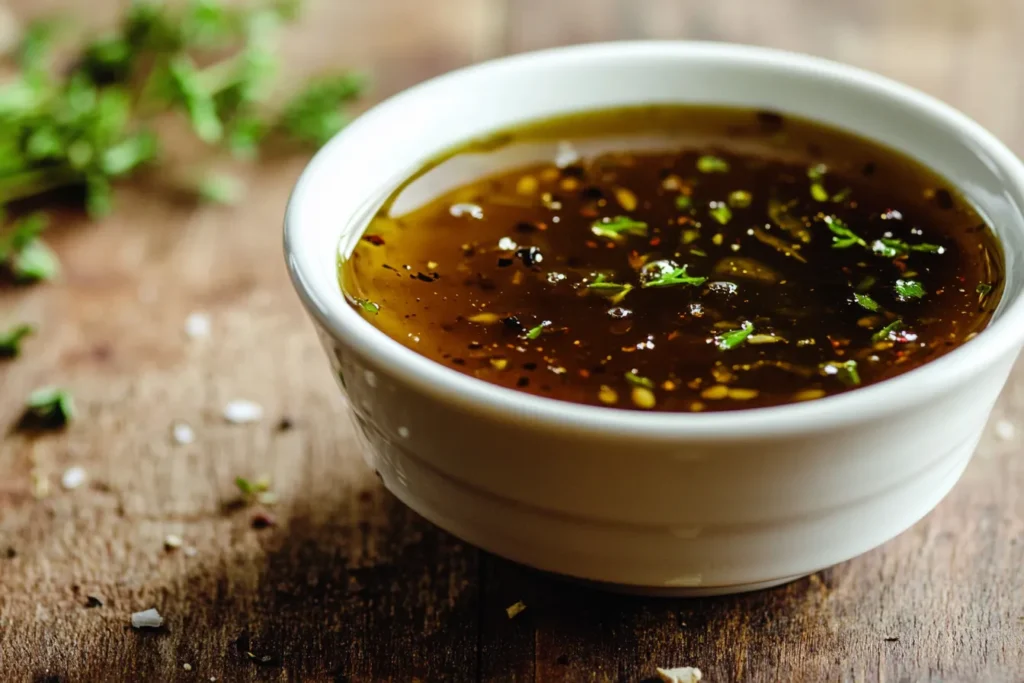
Common Mistakes to Avoid
Even though balsamic vinaigrette is simple, a few pitfalls can throw off your dressing. Here’s how to sidestep them.
Using Cheap Vinegar
Poor-quality balsamic vinegar can taste harsh, thin, or overly acidic, ruining your dressing. Always invest in a reputable brand, ideally with a protected origin label like “Aceto Balsamico di Modena” or “Aceto Balsamico Tradizionale.”
Overseasoning
Because balsamic vinegar has a naturally strong flavor, it’s easy to overdo salt or herbs. Start light, taste, and adjust gradually to avoid overpowering the delicate balance of sweetness and acidity.
Over-whisking
If you whisk too aggressively, you can break the emulsion you’ve worked hard to create, causing the oil and vinegar to separate again. Aim for a steady, moderate whisk or use the jar-shake method to keep it simple.
Balsamic Vinaigrette vs. Other Dressings
Salad lovers and foodies alike often wonder how balsamic vinaigrette stacks up against other popular dressings. Let’s break down the differences so you can choose what best suits your tastes and dietary goals.
Balsamic Vinaigrette vs. Italian Dressing
Italian dressing is another tangy vinaigrette made with red or white wine vinegar, oregano, garlic, onion powder, and often sugar. While it shares a similar oil-and-vinegar base, Italian dressing has a more herb-forward profile, thanks to the generous use of dried herbs. Balsamic vinaigrette, in contrast, delivers a deeper, richer flavor thanks to its sweet aged balsamic, making it a better fit for those who love a sweeter, syrupy tang.
Balsamic Vinaigrette vs. French Vinaigrette
French vinaigrette is typically simpler: just wine vinegar, olive oil, salt, and pepper, sometimes a hint of mustard. It’s sharp, clean, and minimalist, whereas balsamic vinaigrette stands out with its complex sweet-sour profile and dark, caramel-like richness.
Why Balsamic Stands Out
Balsamic vinaigrette is unique because it balances sweetness and acidity in a way that feels gourmet and versatile. It complements a wider range of dishes, from fruit to cheese to meat, far beyond what many other vinaigrettes can achieve. Its depth of flavor also makes it a satisfying swap for heavy, creamy dressings while still feeling indulgent.
Frequently Asked Questions
A well-rounded balsamic vinaigrette article wouldn’t be complete without answering common questions readers might have. Here are some helpful FAQs:
How long does homemade balsamic vinaigrette last?
When stored in a sealed jar or bottle in the fridge, homemade balsamic vinaigrette will last about one week. Because it contains fresh ingredients and no preservatives, it’s best used within this time frame.
Can I use balsamic glaze instead of balsamic vinegar?
You can, but you should dilute it slightly. Balsamic glaze is a reduced, thick syrup that’s sweeter and more intense, so adding water or extra olive oil helps balance its richness in a vinaigrette.
What if my vinaigrette separates?
Separation is totally normal. Just shake the jar or whisk the dressing before serving to re-emulsify it. Adding Dijon mustard helps maintain the emulsion longer.
Is balsamic vinaigrette healthy?
Absolutely! As long as you use high-quality ingredients, balsamic vinaigrette is a healthy choice rich in antioxidants and healthy fats. It supports heart health and avoids the excessive sodium and preservatives often found in bottled dressings.
What’s the best way to store balsamic vinaigrette?
Keep it in a glass jar with a tight-fitting lid in the fridge. Avoid storing it in plastic, as the vinegar’s acidity can interact with some plastics over time.
Can I freeze balsamic vinaigrette?
It’s not recommended. The oil and vinegar will separate and change texture when thawed, resulting in a broken emulsion that’s hard to recover.
Expert Tips & Final Thoughts
For a restaurant-quality balsamic vinaigrette at home, keep these expert pointers in mind:
- Always use good olive oil and authentic balsamic.
- Emulsify slowly to achieve a creamy consistency.
- Taste, taste, taste — then adjust.
- If making a big batch, store in a mason jar for easy reuse.
Homemade balsamic vinaigrette is proof that simple ingredients, treated with care, can deliver extraordinary flavor. Whether you’re dressing greens, drizzling over roasted vegetables, or using it to marinate meat, you’ll find this dressing is one of the most rewarding DIY staples to master.
Conclusion
Balsamic vinaigrette is more than just a salad dressing — it’s a celebration of bold, balanced flavor and wholesome ingredients that can transform even the simplest dish into something memorable. By making it yourself, you gain full control over the quality, taste, and nutritional value, avoiding the excess sugars, stabilizers, and preservatives so common in bottled dressings.
Whether you use it to dress a crisp green salad, drizzle over roasted vegetables, or marinate a tender chicken breast, balsamic vinaigrette delivers the kind of sweet-tangy harmony that makes every bite shine. The combination of high-quality balsamic vinegar, fruity olive oil, a bit of mustard for emulsification, and a touch of honey or maple syrup creates a flavor profile that is as timeless as it is delicious.
Plus, by customizing it with variations like creamy balsamic, lemon balsamic, or even a spicy version, you can adapt this simple dressing to countless dishes and occasions. Once you taste the difference homemade vinaigrette makes, you’ll never look at store-bought bottles the same way again.
So go ahead — grab that whisk or mason jar, and elevate your meals with the easy, healthy, and irresistibly tasty power of balsamic vinaigrette.
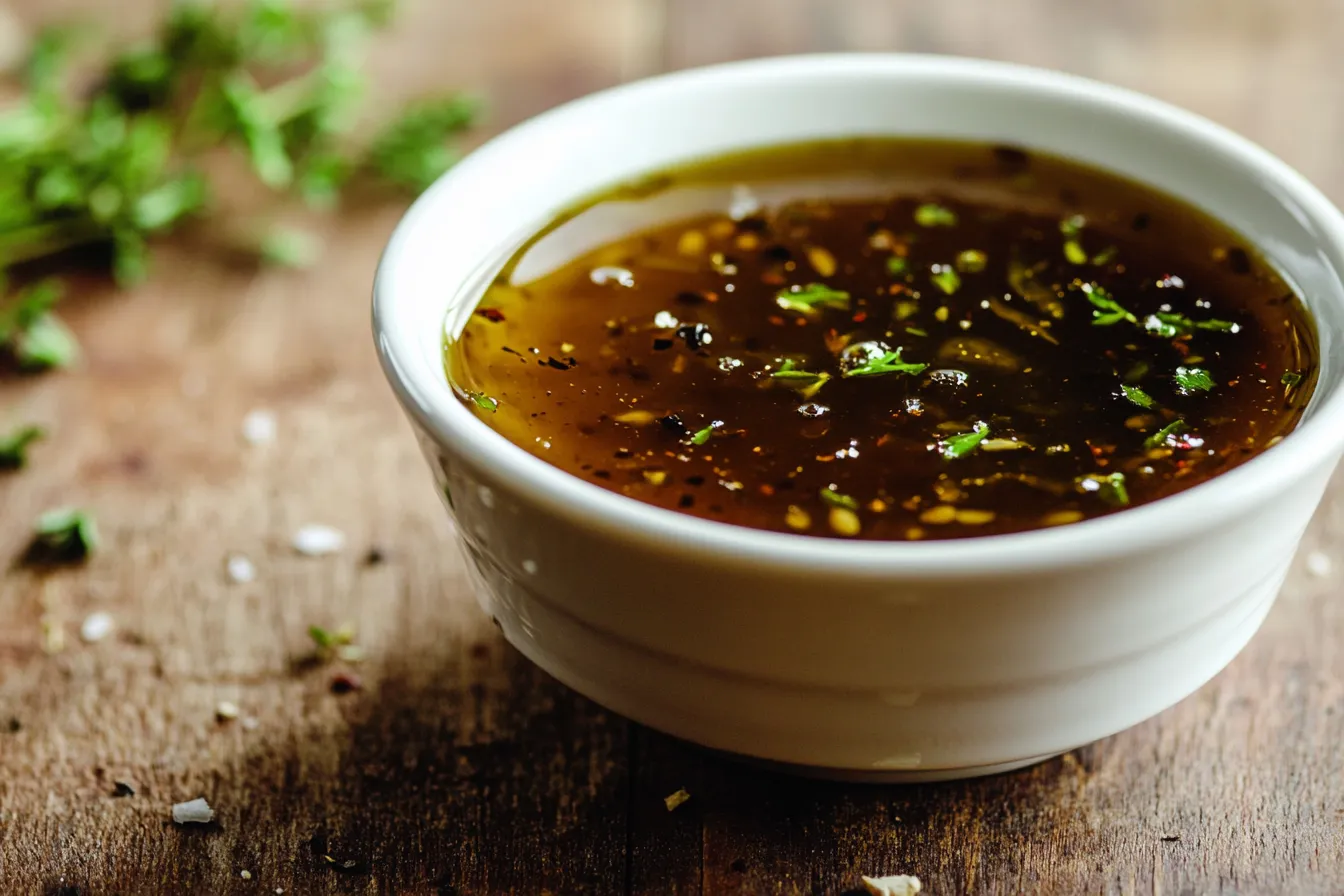
Name: Balsamic Vinaigrette
Ingredients
Equipment
Method
- Instructions:
- In a small bowl or mason jar, combine the balsamic vinegar, Dijon mustard, honey, minced garlic, salt, and black pepper.
- Whisk or shake to blend.
- Slowly drizzle in the olive oil while whisking continuously (or shake vigorously if using a jar) until the dressing is emulsified and smooth.
- Taste and adjust seasoning as needed.
- Store in an airtight jar in the refrigerator for up to one week. Shake before serving.

